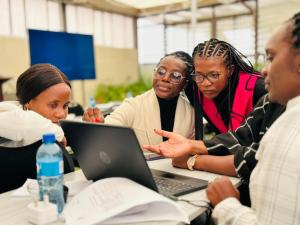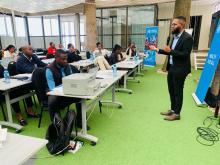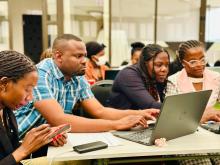Increasing health promotion capacity to respond timeously to health information needs
Access to information is key to realizing the right to health for all. Health inequities are endemic to every region of the world, with rates of disease significantly higher amongst the poorest and most excluded groups.
The Namibia Ministry of Health and Social Services with support from WHO hosted a workshop with the aim of developing a set of Information, Education and Communication (IEC) materials for common diseases to enhance timely delivery of health messages to the intended audiences. The workshop was a first step in creating an information pool for health content development. The common diseases were organized in the thematic groups and for each disease the group drafted the definition, signs and symptoms, complications, route of transmission, prevention measures, risk factors, target audiences, key messages, and communication channels.
After this, the group drafted a set of social media cards. MOHSS IEC Division will develop the content further to ensure that a pool of IEC materials is in draft for each identified disease.
Mr Gottlieb Johannes, Senior Health Prorgamme Officer - Electronic Media said that the pool of information materials will be used by officers, and researchers who would like to produce materials needed by their target audience, using language, illustrations or pictures required to the prevailing context.
Mr Kasera, the Risk Communication and Community Engagement Coordinator in Kavango East Region said that this workshop was not only impactful in helping to mapped out common diseases but was also a learning platform for materials development which he will use to support his region in health promotion activities.
Ms Dulci Petrus, the RCCE Coordinator from the /Kharas Region said that people with higher levels of health literacy are more likely to adopt healthier behaviours and can receive and act on health information and services, including universal health coverage. This is facilitating increased levels of health literacy and once its objectives are fully realized will increased access to accurate and timely information to the most vulnerable.








